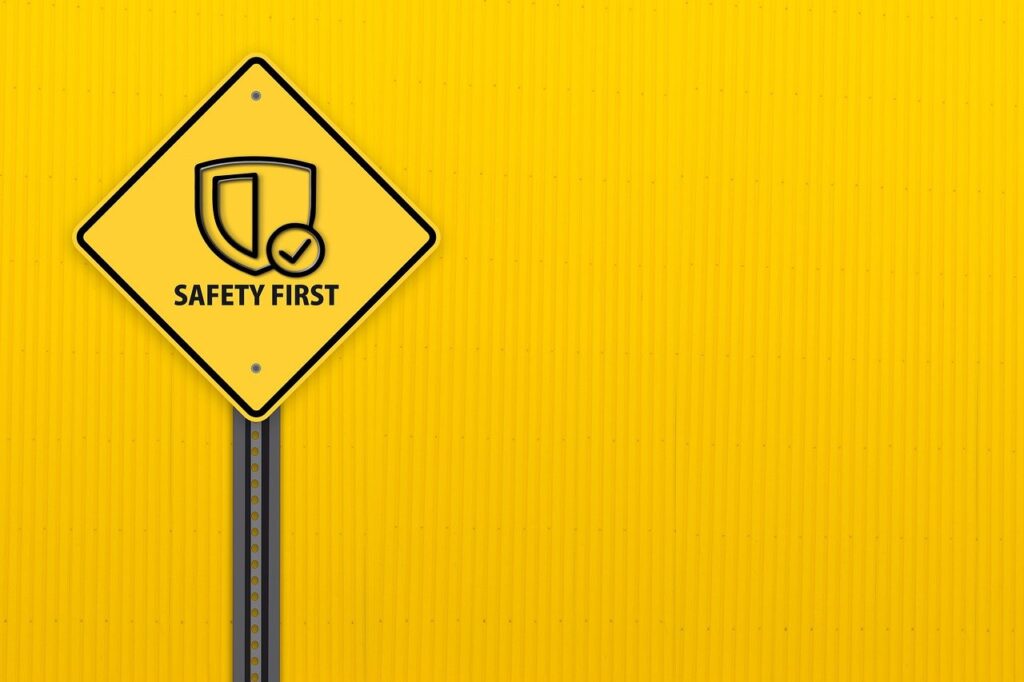There’s a unique thrill that comes with hitting the open road, a sense of adventure that only a road trip can deliver. It’s the promise of new horizons, quirky detours, and unforgettable memories with family and friends. However, beneath this exciting veneer lies a critical truth: safety isn’t just a suggestion, it’s the very foundation upon which a truly great journey is built.
I learned this the hard way, many years ago, when I embarked on a cross-country drive from New England to California. My buddy and I, fueled by youthful overconfidence, decided to push straight through the night, taking turns napping. Twenty-two hours later, my brand-new car sputtered to a halt, overheating on the side of the road. That unplanned stop, while frustrating, became a pivotal moment. We got the car fixed, caught up on much-needed sleep at a motel, and hit the road refreshed. It taught me the invaluable lesson that pushing limits can lead to peril, and that 12 hours behind the wheel was simply too much.
Now, with a family in the backseat and countless miles under my belt, my approach to road trips is fundamentally different. Safety isn’t an afterthought; it’s woven into every mile, every decision, and every stop. The unexpected can always happen, but with a solid plan and the right habits, you can mitigate risks and ensure your adventure is filled with joy, not stress. These proven strategies are what I rely on to keep everyone safe, rested, and ready to make those cherished memories—without a tow truck getting in the way.
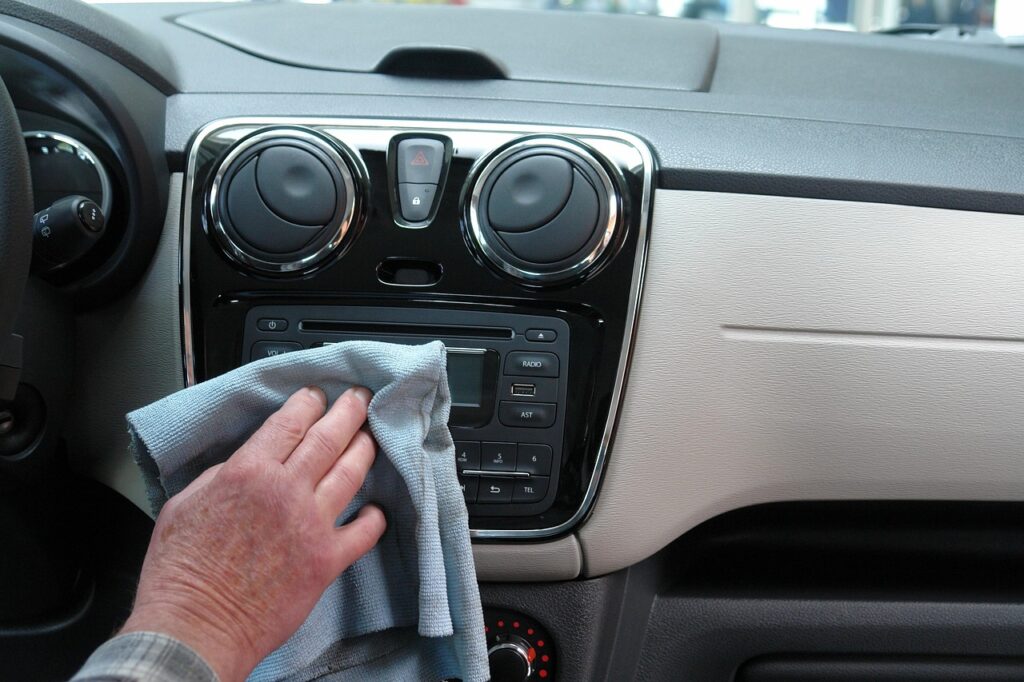
1. **Vehicle Readiness & Maintenance: Your First Line of Defense**
Before your tires even touch the highway, the condition of your vehicle must be your absolute top priority. A long drive isn’t just another commute; it places significant demands on every component of your car. Neglecting pre-trip maintenance is like setting sail without checking the hull, dramatically increasing the risk of breakdowns or, worse, accidents that could derail your entire journey.
Begin by performing a thorough check of all essential fluids. Ensure your oil, coolant, brake fluid, and windshield washer fluid are all at their correct levels and fresh. Equally critical are your tires: verify that the pressure is accurate according to your vehicle’s specifications, inspect the tread depth for adequate grip, and, crucially, don’t overlook the condition and inflation of your spare tire. It’s your ultimate backup plan in case of a roadside puncture.
Next, turn your attention to the electrical and visibility systems. A weak battery is a common culprit for unexpected trouble on long trips, so ensure it’s fully charged and that its connections are clean and free of corrosion. Test all your headlights, taillights, turn signals, and brake lights to confirm they are fully functional. Similarly, inspect your windshield wipers and replace them if they show any signs of wear, as clear visibility is paramount, especially in unpredictable weather conditions.
Your brakes are non-negotiable for safety. Listen for any unusual noises or feel for any sponginess in the pedal, and have them inspected immediately if anything seems off. For longer hauls, or if you’re towing anything, a professional pre-trip inspection at your local mechanic is a bonus move that provides invaluable peace of mind. They can also check for any outstanding recalls using tools like the National Highway Traffic Safety Administration’s (NHTSA) website, ensuring all crucial safety updates have been addressed.

2. **Combating Drowsy Driving: Stay Sharp, Stay Safe**
Drowsy driving is a silent threat, often as dangerous as driving under the influence, yet it’s a risk that many drivers unfortunately underestimate. When you’re fighting to keep your eyes open, your reaction times slow dramatically, your judgment is impaired, and your ability to focus on the road diminishes significantly, putting yourself and everyone around you at severe risk of an accident.
It’s vital to recognize the early warning signs of fatigue. These include having difficulty focusing on the road ahead, your eyelids feeling heavy, struggling to keep your head upright, or finding yourself daydreaming more than usual. If you experience any of these symptoms, do not try to push through. The most responsible and effective action is to pull over to a safe, well-lit area and get some rest, even if it means altering your schedule.
Preventing drowsiness starts well before you even put the car in drive. Always ensure you get a good night’s sleep before a long journey, avoiding late-night starts that can throw off your natural sleep cycle. If you’re traveling with others, make it a priority to swap drivers frequently, allowing each person adequate rest. Even short breaks from behind the wheel can help reset your brain and improve alertness.
To keep your mind engaged during long stretches, utilize podcasts, audiobooks, or even road trip trivia. Implement the “2/100 rule,” which means stopping every two hours or 100 miles to stretch your legs, walk around, or simply refuel. Hydrate smart with water and avoid sugar bombs and heavy meals that can lead to energy crashes. While caffeine can offer a temporary boost, it’s not a substitute for proper rest; when in doubt, a nap is always the better choice.

3. **Eliminating Distractions: Focus on the Road, Nothing Else**
In today’s fast-paced world, distractions are everywhere, and behind the wheel, they become incredibly dangerous. Not having your focus 100% on the road is one of the greatest risks a driver can take, dramatically increasing the likelihood of a collision. Road trips, with their shared experiences and often varied landscapes, can sometimes introduce more opportunities for these hazardous lapses in attention.
If you have passengers, especially children, in the car with you, it’s wise to lay down some clear ground rules before you set off. While conversation is fine, any shouting, jostling, or excessively distracting activity needs to be curbed immediately. Be prepared to stop the car at your earliest safe convenience to address and eliminate such distractions. Others in the car can also be a tremendous asset in minimizing your need to multitask.
Consider assigning specific roles to your passengers. One person could be in charge of navigation, another for managing the music, and so on. This simple step helps ensure you avoid taking your hands from the wheel and gearstick as much as possible, keeping your physical attention firmly on driving. The goal is to eliminate any task that pulls your focus, however briefly, away from the complex job of driving safely.
Among all distractions, mobile phone use is arguably the most perilous. Figures suggest that texting while driving can increase your likelihood of getting into a fatal accident by an astonishing 900%. Even hands-free calling, while seemingly safer, does not eliminate the cognitive distraction. Your brain is still divided, making you slower to react to sudden hazards. Set up any necessary podcasts or map navigation apps before you start driving, and if you receive a call, ignore it until you have the opportunity to safely pull over.
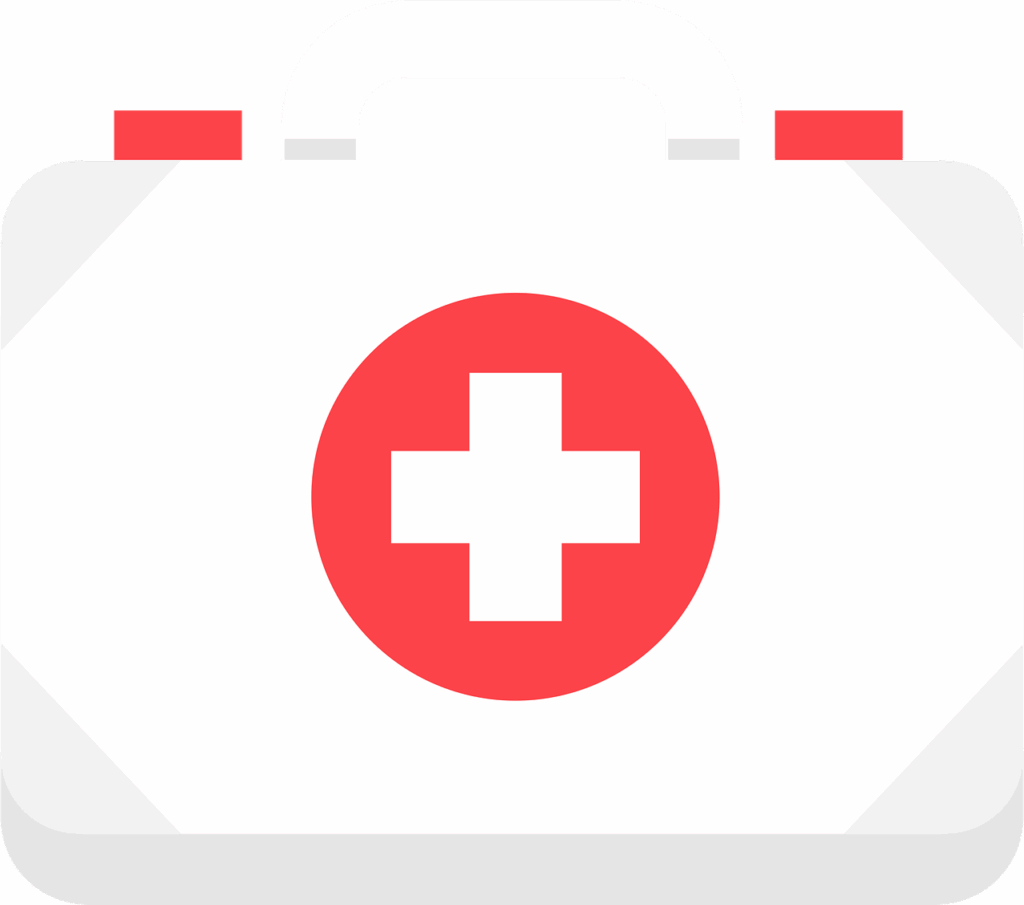
4. **Essential Emergency & First-Aid Kits: Prepared for Anything**
Even the most careful drivers can encounter unexpected situations on the road. That’s why being thoroughly prepared with the right emergency supplies is not just smart—it’s absolutely critical. Thinking ahead about potential mishaps, from a flat tire to a minor injury, allows you to handle them calmly and effectively, keeping a small problem from escalating into a major crisis.
One of the most essential preparedness steps is investing in a subscription to a reliable roadside assistance plan. This service becomes invaluable if you find yourself stranded in the middle of nowhere, needing a tow, a jump start, or a tire change. Beyond that, a robust emergency kit should be a permanent fixture in your vehicle. This kit should include bottled water, blankets or a space blanket for warmth, spare clothes, a dependable flashlight (or headlamp with extra batteries), and a fully charged phone with a list of essential emergency numbers, stored both digitally and on paper. Jumper cables, tire-changing tools, and high-visibility cones or reflective triangles are also indispensable for roadside safety.
A comprehensive first-aid kit is equally vital, moving beyond just a few adhesive bandages. Your kit should contain an assortment of bandages and non-adherent pads, antiseptic wipes, antibiotic ointment, and liquid bandage for minor cuts. Include hydrocortisone cream for skin irritations, surgical tape, non-latex gloves, tweezers, small scissors, and cotton swabs. For more advanced preparedness, consider adding an instant cold pack, moleskin for blisters, butterfly closures, burn cream or aloe, afterbite/sting relief, electrolyte tablets, eye drops, antihistamines (like Benadryl), antacids, acetaminophen (Tylenol), and ibuprofen (Advil).
Don’t forget the essentials for your glove box, which should be easily accessible. This includes critical medical information for each family member, detailing allergies and conditions, along with a comprehensive emergency contact list. Keep your roadside assistance number readily available, and ensure you have digital copies of your insurance and registration, with backups stored in your luggage. A vehicle owner’s manual, a tire pressure gauge, disposable ponchos for unexpected rain or roadside fixes, tissues, wet wipes, hand sanitizer, and pens/pencils will round out your immediate access supplies.
Finally, complement your emergency and first-aid provisions with a dedicated roadside emergency kit, preferably stored in your trunk in a tote. This kit should house jumper cables or a car battery charger, a jack, a headlamp or extra flashlight, reflective triangles or flares, a reflective safety vest for visibility, a blanket, additional bottled water (at least one per passenger), shelf-stable energy bars, work gloves, duct tape, zip ties, a multi-tool with various functions, and a safety hammer/glass breaker, strategically stored within the driver’s reach.
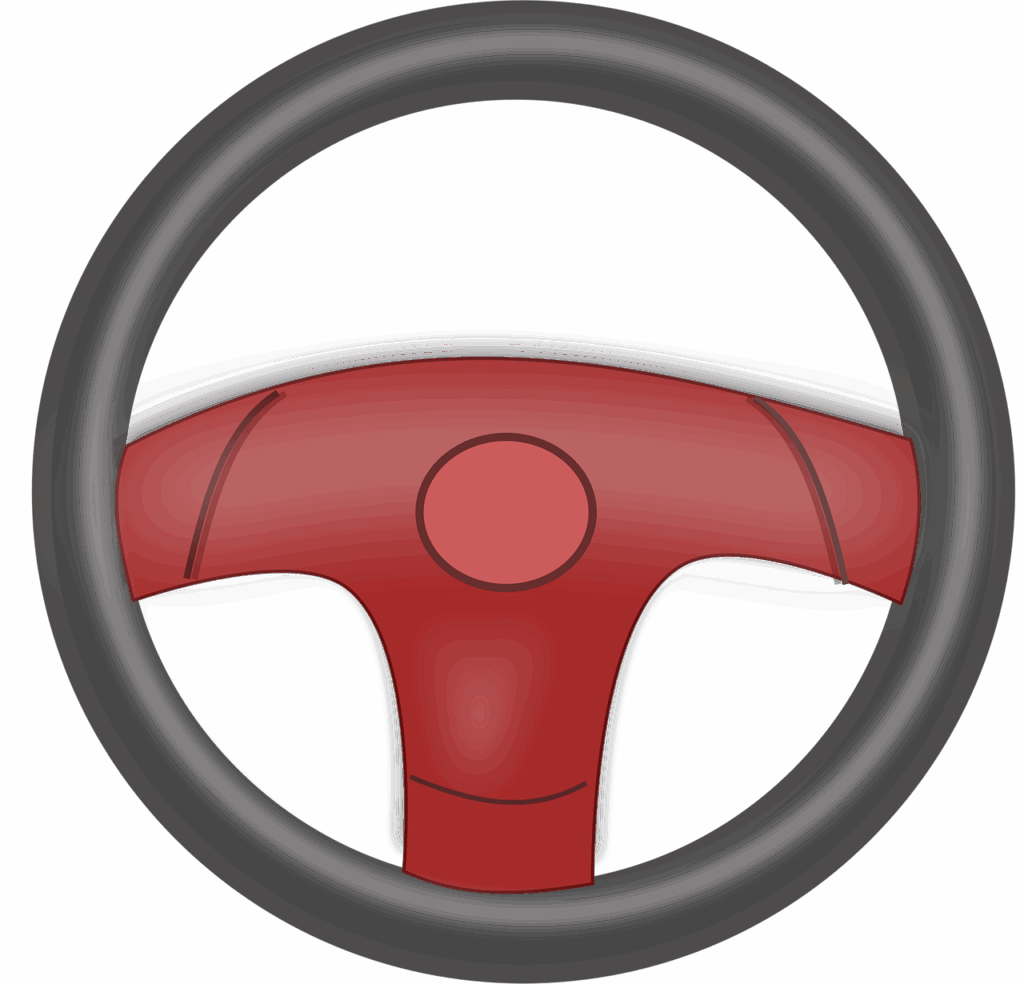
5. **Safe Driving Practices: Master Speed and Distance**
It might sound like common sense, but consistently obeying the speed limit and maintaining appropriate following distances are two of the most fundamental yet frequently overlooked aspects of road safety. Many drivers mistakenly believe that pushing the limit slightly is acceptable to save a few minutes, or that tailgating is a harmless habit. However, these seemingly minor transgressions dramatically increase the risk of an accident with potentially devastating consequences.
The faster you travel, the longer it takes your vehicle to slow down or come to a complete stop. This fundamental principle means that speeding severely compromises your reaction time, leaving you with significantly less opportunity to respond appropriately to a sudden hazard, such as unexpected braking from the car ahead, debris on the road, or an animal darting into your path. The few minutes you might save are never worth the increased danger.
To ensure you’re always within safe speed parameters, make it a habit to check your speedometer regularly. Be acutely aware of posted traffic signs, especially in changing zones. A key strategy to avoid the temptation to speed is to plan your journey more effectively, leaving earlier than you think necessary. This removes the pressure of being late, allowing you to drive at a safe and steady pace, unburdened by self-imposed deadlines.
Equally crucial is maintaining a safe cushion of space between your vehicle and the one directly in front of you. This is often referred to as the “three-second rule.” To apply it, pick a stationary object on the side of the road, and once the vehicle ahead passes it, count “one-thousand-one, one-thousand-two, one-thousand-three.” If you reach the object before finishing your count, you’re following too closely and need to slow down to create more space.
However, the “three-second rule” is a minimum, and conditions often necessitate extending this buffer. For instance, if you’re following a large truck or other big vehicle, which often have severe blind spots and require longer stopping distances, increase your following time to a “four-second rule.” When the weather turns foul—think rain, snow, or ice—or if there are any other unsafe driving conditions, you should extend this even further to a “six-second rule” or more. For any situation that adds even a little extra risk, add a little extra time and space; it’s a simple, effective way to buy yourself precious seconds to react and stay safe.
6. **Defensive Driving Mindset: Anticipate and Adapt**
Defensive driving isn’t just about following the rules; it’s a proactive mindset that transforms you into a safer, more aware driver. It’s about anticipating the potential mistakes and unpredictable actions of other drivers and being prepared to react safely, even when you are in the right. This approach can be the crucial difference between avoiding a collision and becoming involved in one.
At its core, defensive driving means constantly keeping your eyes on all other drivers around you. Don’t just look at the car directly in front; scan far ahead, check your side mirrors frequently, and be aware of vehicles in your blind spots. Learn about your vehicle’s blind spots and practice safely checking them before changing lanes. Pay close attention to any signs of erratic driving, such as swerving, sudden braking, or excessive speeding from other vehicles, as these are clear indicators of potential danger.
When you spot another driver behaving erratically or aggressively, the defensive driving approach is to extract yourself from that dangerous situation as soon as possible. This means backing off and creating more distance, changing lanes if it can be done safely, or even taking an earlier exit if necessary. The goal is to avoid conflict and put as much space between you and the potential hazard as possible, rather than engaging or challenging the other driver.
Defensive driving can sometimes be difficult, especially if another driver’s actions provoke you. However, it’s paramount not to rise to challenges or engage in any form of road rage. Your safety and the safety of your passengers are infinitely more important than winning an argument or proving you were in the right. By maintaining a calm, focused, and adaptable approach, you can navigate complex road situations and significantly reduce your risk of an accident, ensuring a smoother, safer journey for everyone on the road.
Hitting the road for adventure is truly one of life’s great pleasures, but as we’ve explored, getting there safely demands more than just a full tank of gas and a good playlist. While the first leg of our journey focused on the immediate actions behind the wheel, the road to ultimate safety extends far beyond. It’s about the foresight to plan, the wisdom to secure your world, and the peace of mind that comes from being prepared for anything the open road, or life, throws your way. Now, let’s gear up for the next crucial set of strategies that move us beyond the immediate act of driving, ensuring every aspect of your road trip—and even your home—is as secure as possible.
7. **Proactive Trip Planning & Smart Stops: Navigating with Foresight**
Even with a perfectly prepped vehicle and a vigilant driver, a great road trip can quickly turn stressful without careful route and stop planning. Proactive trip planning isn’t just about knowing your destination; it’s about mapping out the journey itself, anticipating needs, and choosing your stops wisely. This foresight not only enhances safety but also reduces unexpected anxieties that can otherwise derail your travel mood.
One of the most fundamental yet often overlooked aspects of trip planning is managing your fuel. Never allow your gas tank to get too low, especially in unfamiliar territory. Relying on the next exit to have gas can leave you stranded in remote areas or stuck in unexpected traffic. Instead, make it a habit to fuel up before your tank dips below a quarter full, and use resources like AAA’s TripTik tool to identify gas stations along your planned route, ensuring you know where the next opportunity to refuel lies.
Equally important is planning your rest and meal stops ahead of time. Spontaneous stops might sound adventurous, but unplanned pull-offs can lead to less-than-ideal locations. Aim for well-lit, public rest areas, established chain gas stations, or pre-researched restaurants. Knowing exactly where and when you’ll stop helps combat drowsy driving, allows for consistent breaks, and minimizes the need for last-minute decisions that could compromise safety or convenience.
In an age of omnipresent GPS, the humble paper map remains a critical safety backup. Your phone’s GPS is only as good as your cell signal, and venturing into rural areas or national parks can often mean losing connectivity. A physical map ensures you can always navigate, even when technology fails. Furthermore, for major overnight stops, make it a point to research and note the locations of urgent care centers; this small step can be a lifesaver if a family member experiences an unexpected medical issue.
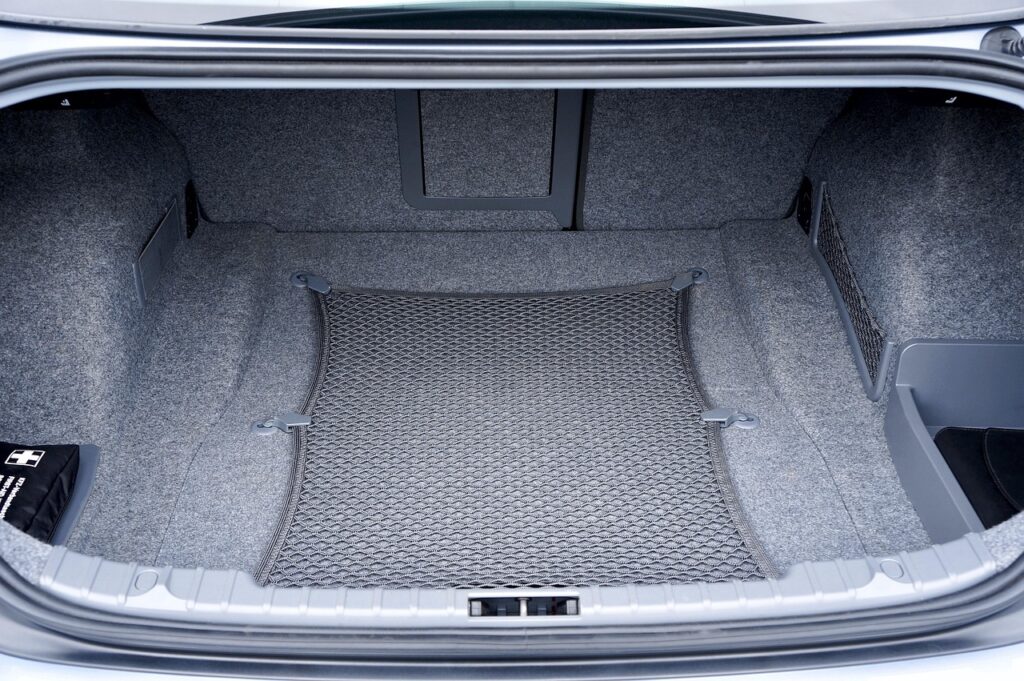
8. **Storing Items Appropriately & Securing Your Load: Beyond the Trunk**
When you pack for a road trip, the focus is often on what to bring, not always on how to bring it safely. However, securing your cargo and storing items appropriately is a crucial safety measure that prevents distractions and potential hazards. Loose items, even seemingly small ones, can become dangerous projectiles in a sudden stop or collision, posing a significant risk to occupants.
Before you even start the engine, conduct a quick check of your vehicle’s interior. Any cargo that might shift or roll around should be secured. While the trunk is ideal for most luggage, ensure that items within the passenger cabin, such as water bottles, snacks, or bags, are placed in secure locations like footwells, seat pockets, or strapped down. If something falls to the floor while you’re driving, resist the urge to reach down and grab it immediately. This brief moment of distraction can have catastrophic consequences; wait until you can safely pull over.
For essential items you might need quick access to, such as your ID, a small wallet, or medication, keep them within easy reach but still secured. A center console compartment, a zippered seat-back pocket, or a dedicated caddy can work well. If you have passengers, especially in the front seat, assign them responsibility for finding and handling items you might need. This simple delegation keeps your hands on the wheel and your eyes on the road, minimizing moments of divided attention.
Remember that securing your load extends to any external carriers, such as roof racks or bike mounts. Double-check all straps and latches before departure and periodically during longer journeys. An unsecured load on the outside of your vehicle can not only be lost but can also create dangerous road debris for other drivers, making proper securing a responsibility that extends beyond your own vehicle’s safety.

9. **Staying Safe at Stops: Crime Prevention on the Road**
Road trips inherently involve stops—for gas, food, and overnight stays. While these pauses are essential for rest and refueling, they can also present unforeseen risks if not approached with a safety-first mindset. Practicing crime prevention at every stop is about minimizing your vulnerability and protecting yourself and your family from potential threats.
When choosing an overnight accommodation, prioritize hotels with indoor halls and visibly lit parking lots. Better lighting and visibility act as natural deterrents to criminal activity, making it harder for perpetrators to operate unnoticed. Always aim to park your vehicle near the front entrance of the hotel or in a high-traffic area directly under lights. This increases the chances of witnesses and security camera coverage, adding an extra layer of protection for your vehicle and its contents.
Never leave anything of real value visible in your car, even if you believe the parking lot is secure. A car full of tempting items is an invitation for opportunistic thieves. At most, stash items you could afford to lose without derailing your trip, and always ensure they are out of sight. When you enter your hotel room, make it a routine to use the deadbolt and security latch. These simple physical barriers provide valuable seconds and act as a deterrent, even in seemingly safe areas.
For families traveling with children, institute a clear “buddy rule.” No one, especially a child, should ever go to the bathroom, vending machine, or any other area alone. Traveling in pairs offers mutual protection and reduces individual vulnerability. These small, consistent habits at every stop collectively build a robust defense against potential crime, allowing you to relax and enjoy your downtime with greater peace of mind.

10. **Navigating City Stops Safely: Urban Awareness**
While much of road trip safety focuses on the open highway, integrating city stops into your itinerary requires a different, yet equally critical, set of precautions. Big cities, with their vibrant culture and endless attractions, also come with unique safety considerations. A savvy traveler understands that urban environments demand heightened awareness and specific strategies to ensure a pleasant and secure experience.
Parking is often the first challenge in a city. Always plan your parking in advance, opting for well-lit, secure parking garages or utilizing hotel valet services if available. Before you leave your vehicle, take a moment to snap a photo of your parking level and spot number with your phone. This simple step can save significant stress and time when returning to your car, especially in large, multi-level structures where every floor can look identical.
When exploring the city on foot, especially with family, make it a priority to avoid wandering too far off the beaten path, particularly after dark. Stick to main thoroughfares, well-populated areas, and tourist-friendly zones. If you plan to use public transit like subways or buses, familiarize yourself with your route beforehand. Avoid empty train cars or isolated bus stops, opting for busier, more visible sections and being aware of your surroundings at all times.
In crowded urban settings, the temptation to flash valuables can be high. However, it’s paramount to keep phones, wallets, and cameras secure and out of plain sight. Thieves often target those who appear distracted or display expensive items. After dark, instead of walking long distances or navigating confusing directions, rely on trusted rideshare apps. This provides a safer, more direct route back to your accommodation, minimizing your time on potentially risky streets. If traveling with children, establish a clear meeting point—a specific landmark or spot near an exit—in case anyone gets separated.
Read more about: Mastering the Road: Expert Strategies to Safely Outsmart Tailgaters Without Touching Your Brakes
11. **Accounting for Bad Weather & Adapting Driving Habits: Prepared for Nature’s Fury**
The weather can be one of the most unpredictable and dangerous elements of any road trip. What starts as a clear, sunny day can rapidly change, introducing hazardous conditions like heavy rain, snow, ice, or fog. Smart drivers don’t just react to bad weather; they anticipate it, integrate it into their planning, and adapt their driving habits proactively to maintain control and safety.
Before you even depart, make it a habit to check the weather forecast along your entire route, not just at your starting point and destination. If you’re anticipating severe weather, consider adjusting your travel dates or route to avoid the worst of it. For trips during seasons known for inclement weather, consider ensuring your vehicle is equipped with tires that can better deal with such conditions, like all-season or winter tires.
Once on the road and conditions deteriorate, the most critical adaptation is to reduce your speed significantly—often by 5-10 miles per hour or more, depending on severity. This slower pace dramatically improves your reaction times and gives you more control. Avoid any sudden changes in direction or speed, as these can easily cause your vehicle to skid or lose traction, especially on wet or icy roads. Smooth, deliberate movements are key.
Visibility is paramount in bad weather. Turn on your headlights as soon as rain or fog begins, not just at dusk. If visibility is severely compromised, use your fog lights, but be mindful of oncoming drivers and ensure they are switched off when conditions improve to avoid dazzling others. If the weather becomes truly perilous—heavy snowfall, white-out conditions, or severe ice—the safest action is to pull over to a safe location, like a rest stop or gas station, and wait for conditions to improve. A delay is always preferable to an accident.
12. **Home Security While You’re Away: Peace of Mind from Miles Away**
While the focus of a road trip is naturally on the journey itself, a truly comprehensive safety plan extends to what you leave behind. Ensuring your home is secure before you depart provides invaluable peace of mind, allowing you to fully immerse yourself in your adventure without nagging worries about your property. A few simple, proactive steps can significantly reduce the risk of unwelcome surprises upon your return.
One of the easiest yet most effective deterrents is to make your home appear occupied. Hold your mail and newspaper deliveries, even for a long weekend. A stuffed mailbox or a pile of newspapers on the porch is a clear signal that no one is home, making your property an easier target for burglars. If a pet sitter is an option, having them stay overnight not only keeps your pet happy and cared for but also ensures your house looks lived-in, further enhancing security.
Beyond appearances, consider automating your home’s lighting. Set exterior lights on a dusk-to-dawn timer, and use smart plugs or timers to have interior lights flick on randomly each evening. This irregular pattern creates the illusion of activity within the house. Installing visible security cameras, even just one or two, can act as a powerful deterrent. Many modern systems allow for remote monitoring, offering an extra layer of reassurance.
Finally, resist the urge to post real-time updates of your epic hikes, roadside diner finds, or stunning scenic views on social media while you’re still away. As tempting as it is to share your adventures, broadcasting your absence publicly can inadvertently alert potential thieves to an empty house. Hold off on sharing those highlights until you’ve safely returned home. These layered security measures, both visible and discreet, are your best defense against property crime while you’re enjoying your well-deserved break.
Read more about: The Ones That Got Away: Classic Rides Car Enthusiasts Seriously Regret Selling
The open road promises freedom, discovery, and those unforgettable moments that become the fabric of our memories. By embracing these comprehensive strategies—from the meticulous vehicle preparation to the defensive mindset behind the wheel, and from the thoughtful planning of stops to the vital security measures for both your journey and your home—you empower yourself to truly enjoy every mile. These aren’t just rules; they’re the essential blueprints for turning potential hazards into smooth sailing, ensuring your next road trip is not just an adventure, but a safe and successful one. Drive smart, stay alert, and let the journey unfold with joy and confidence.


